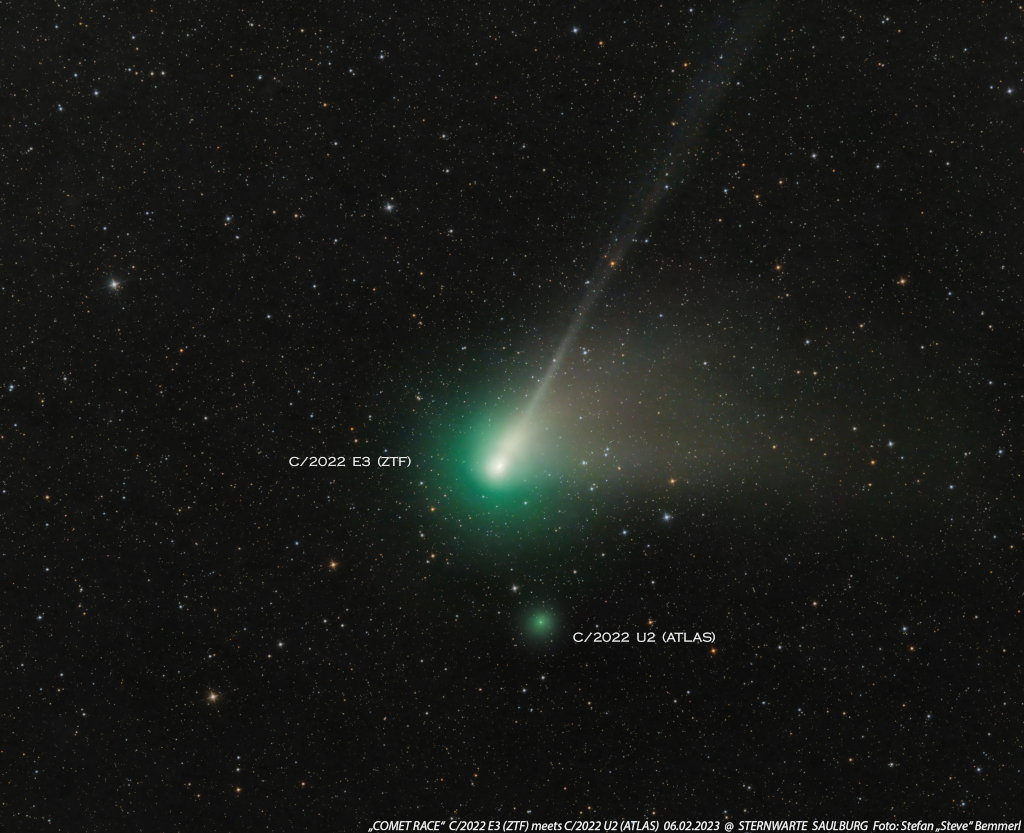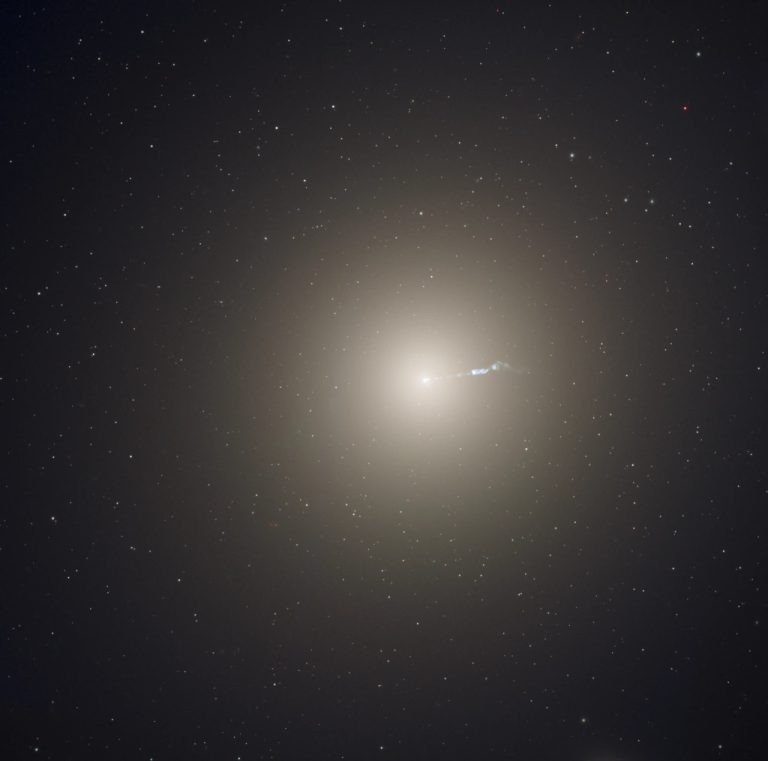2023年2月10日
ZTF meets ATLAS
Image Credit & Copyright: Stefan Bemmerl
Explanation: Fading as it races across planet Earth’s northern skies comet C/2022 E3 (ZTF) shares this telescopic frame with comet C/2022 U2 (ATLAS). Captured on the night of February 6 from a garden observatory in Germany’s Bavarian Forest, the starry field of view toward the constellation Auriga spans about 2.5 degrees. Discovered by sky survey projects in 2022 (the Zwicky Transient Facility and the Asteroid Terrestrial-impact Last Alert System) these long-period comets are outbound, reaching perihelion just last month. The much fainter comet ATLAS made its closest approach to our fair planet on January 29 at a distance of about 4.6 light-minutes, compared to a mere 2.4 light-minutes for comet ZTF on February 2. This comet ATLAS lacks the well-developed tails of the formerly naked-eye comet ZTF. But both comets sport greenish tinted comas, emission from diatomic carbon molecules fluorescing in sunlight. Continuing its dash across planet Earth’s sky, the good-binocular comet ZTF will appear close to bright planet Mars tonight.
Tomorrow’s picture: light-weekend
ZTF遇到ATLAS彗星
图像提供与版权: Stefan Bemmerl
说明: 目前于地球北天飞掠并逐渐暗去的彗星C/2022 E3(ZTF),与彗星C/2022 U2(ATLAS)分享了这片望远镜视野。这幅于2月6日,在德国巴伐利亚森林的一座花园天文台拍摄的图像,呈现了御夫座方向约2.5度的星空。这两颗皆是由巡天计划(分别是ZTF-兹威基瞬变设施及ATLAS-小行星撞地球最后警报系统)在2022年所发现的长周期彗星,刚在上个月抵达近日点,目前则已向太阳系外围退去。远更暗淡的ATLAS彗星,在1月29日最近地球时的距离大约是4.6光分,而ZTF彗星在2月2日最接近地球时,距离只有2.4光分。此外,ATLAS彗星也未发展出ZTF彗星先前在裸视阶段所拥有的完整彗尾。不过,这二颗彗星皆曳着泛绿的彗发,其源头为双碳分子被阳光激发所发出的绿色荧光。持续在地球天空中飞掠、高品质双筒望远镜可见的ZTF彗星,今晚会来到明亮的火星附近。
明日的图片: light-weekend







